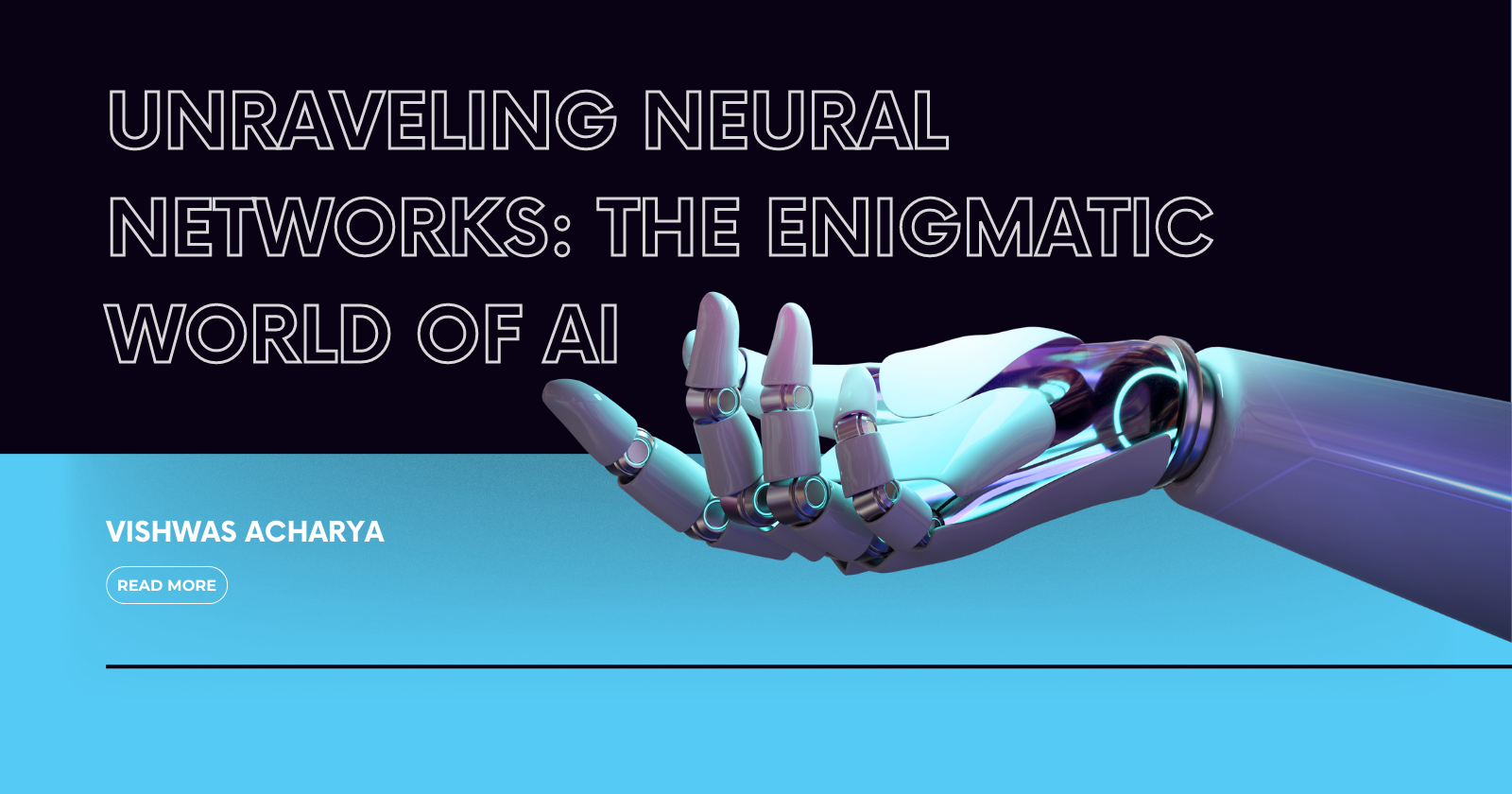Unveiling the Magic of Neural Networks
 Vishwas Acharya
Vishwas AcharyaTable of contents
- Introduction to Neural Networks
- The Basics of Artificial Neural Networks
- Understanding the Architecture of Neural Networks
- How Neural Networks Learn
- Training Data and Optimization
- Deep Learning and Its Advancements
- Applications of Neural Networks
- Ethical Considerations in Neural Networks
- The Future of Neural Networks
- Conclusion

Introduction to Neural Networks
Neural networks, often referred to as artificial neural networks, are computational systems inspired by the structure and functionality of the human brain. They are composed of interconnected artificial neurons, each capable of processing and transmitting information. Just like the human brain, these networks can learn from experience and improve their performance over time.
The Basics of Artificial Neural Networks
Neurons: The Building Blocks
At the core of a neural network are artificial neurons, also known as nodes or units. These neurons receive input, process it using an activation function, and produce an output. The connections between neurons, represented by weights, determine the strength of the signal transmitted between them.
Layers: Creating Hierarchical Representations
Neural networks are organized into layers, each serving a specific purpose. The input layer receives data, the output layer produces the final result, and the hidden layers process intermediate information. Deep neural networks consist of multiple hidden layers, allowing them to learn hierarchical representations of the data.
Weights and Biases: The Key to Learning
During the training process, neural networks adjust their internal parameters, such as weights and biases, to minimize errors and make accurate predictions. This learning process is iterative and is driven by the optimization algorithm used.
Understanding the Architecture of Neural Networks
Neural networks come in various architectures, each designed for specific tasks.
Feedforward Neural Networks
The simplest form of neural networks, feedforward neural networks, process data in a unidirectional manner, from input to output. They are often used in tasks like classification and regression.
Recurrent Neural Networks
Recurrent neural networks (RNNs) are designed to handle sequential data, where the order of inputs matters. They have loops that allow information to persist, making them suitable for tasks like natural language processing and speech recognition.
Convolutional Neural Networks
Convolutional neural networks (CNNs) are highly effective in processing grid-like data, such as images and videos. Their ability to detect patterns and features in data has made them the go-to choice for image recognition tasks.
How Neural Networks Learn
Activation Function: Introducing Non-Linearity
The activation function of a neuron introduces non-linearity into the network. This enables the network to model complex relationships in the data and makes it capable of learning and adapting to various patterns.
Forward Propagation: Making Predictions
Forward propagation is the process by which data moves through the network, from input to output, to make predictions. Each neuron computes a weighted sum of its inputs and passes the result through the activation function.
Backpropagation: Fine-Tuning the Network
Backpropagation is the process of fine-tuning the network's parameters based on the difference between predicted and actual output. It helps the network learn from its mistakes and improve its accuracy.
Training Data and Optimization
The Role of Training Data
Training data is crucial for neural networks to learn and generalize. A diverse and representative dataset ensures that the network can handle various scenarios and make accurate predictions.
Gradient Descent: Optimizing the Network
Gradient descent is an optimization technique used to minimize the network's error during training. It adjusts the weights and biases in the direction that reduces the prediction error.
Deep Learning and Its Advancements
Going Deep: Introduction to Deep Learning
Deep learning refers to the use of neural networks with multiple hidden layers. Deep networks have shown remarkable performance in complex tasks and have driven advancements in various fields.
Generative Adversarial Networks (GANs)
GANs are a type of deep learning architecture that consists of two neural networks: a generator and a discriminator. They are used to generate realistic data and have found applications in image synthesis and style transfer.
Applications of Neural Networks
Image and Speech Recognition
Neural networks have achieved remarkable accuracy in tasks like image classification, object detection, and speech recognition. They power facial recognition systems, virtual assistants, and more.
Natural Language Processing
Neural networks have revolutionized natural language processing tasks, such as language translation, sentiment analysis, and chatbot interactions, enabling more human-like communication with machines.
Autonomous Vehicles
Neural networks play a crucial role in enabling autonomous vehicles to perceive their surroundings, make decisions, and navigate safely, contributing to the advancement of self-driving technology.
Ethical Considerations in Neural Networks
As neural networks become more prevalent, ethical concerns arise. Issues like bias in data, transparency of decision-making, and data privacy need to be addressed to ensure the responsible use of this technology.
The Future of Neural Networks
The potential of neural networks is boundless. As research and technology progress, we can expect more breakthroughs and innovations that will shape the future of artificial intelligence.
Conclusion
Neural networks have unlocked the magic of artificial intelligence, allowing machines to learn, adapt, and perform tasks that once seemed impossible. Their ability to process vast amounts of data and extract meaningful information has transformed industries and enhanced our daily lives. As we continue to explore the potential of neural networks, we must do so responsibly, considering the ethical implications and striving for a future where AI benefits all of humanity.
By Vishwas Acharya 😉
Checkout my other content as well:
YouTube:
Podcast:
Book Recommendations:
Subscribe to my newsletter
Read articles from Vishwas Acharya directly inside your inbox. Subscribe to the newsletter, and don't miss out.
Written by

Vishwas Acharya
Vishwas Acharya
Embark on a journey to turn dreams into digital reality with me, your trusted Full Stack Developer extraordinaire. With a passion for crafting innovative solutions, I specialize in transforming concepts into tangible, high-performing products that leave a lasting impact. Armed with a formidable arsenal of skills including JavaScript, React.js, Node.js, and more, I'm adept at breathing life into your visions. Whether it's designing sleek websites for businesses or engineering cutting-edge tech products, I bring a blend of creativity and technical prowess to every project. I thrive on overseeing every facet of development, ensuring excellence from inception to execution. My commitment to meticulous attention to detail leaves no room for mediocrity, guaranteeing scalable, performant, and intuitive outcomes every time. Let's collaborate and unleash the power of technology to create something truly extraordinary. Your dream, my expertise—let's make magic happen! Connect with me on LinkedIn/Twitter or explore my work on GitHub.